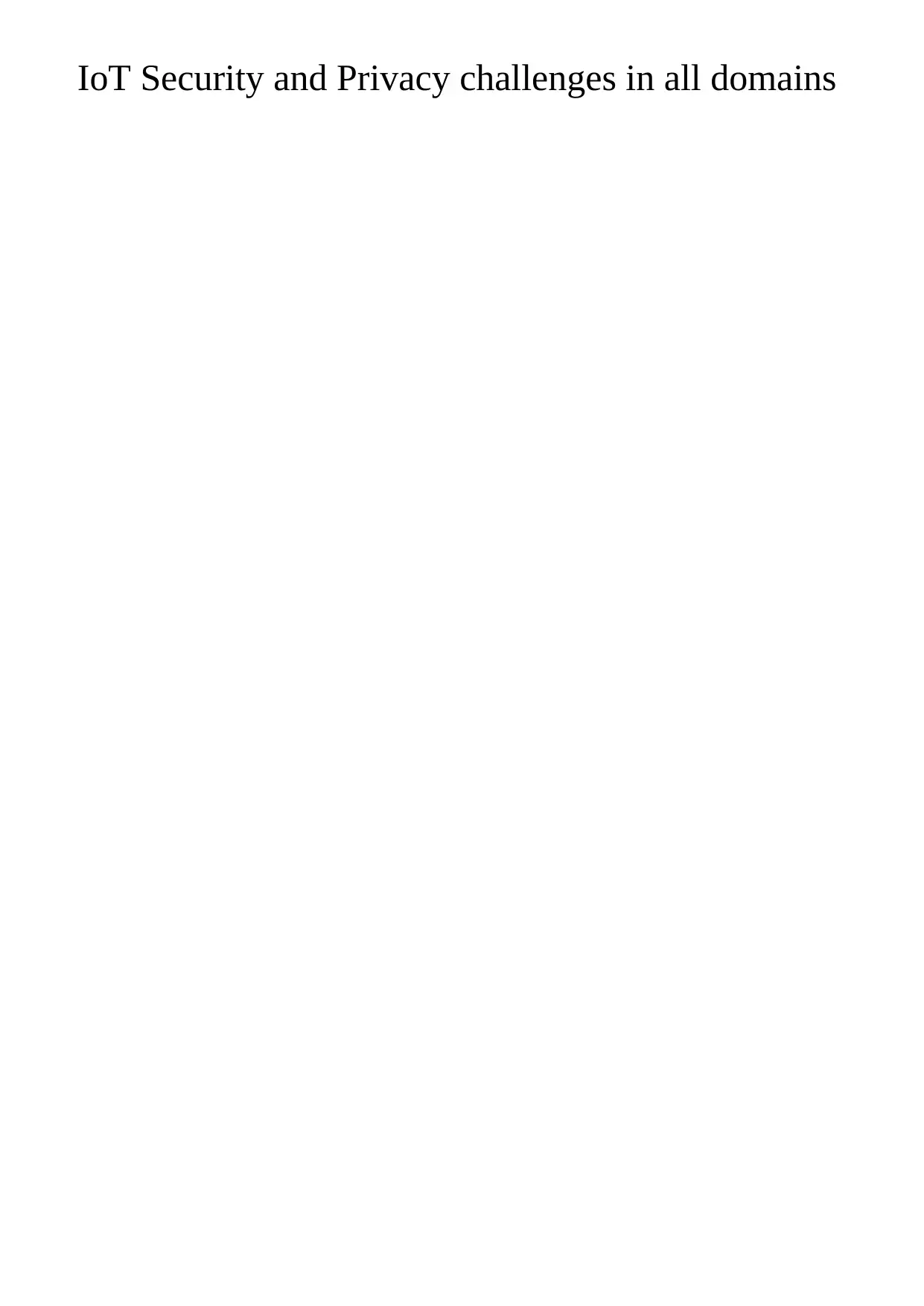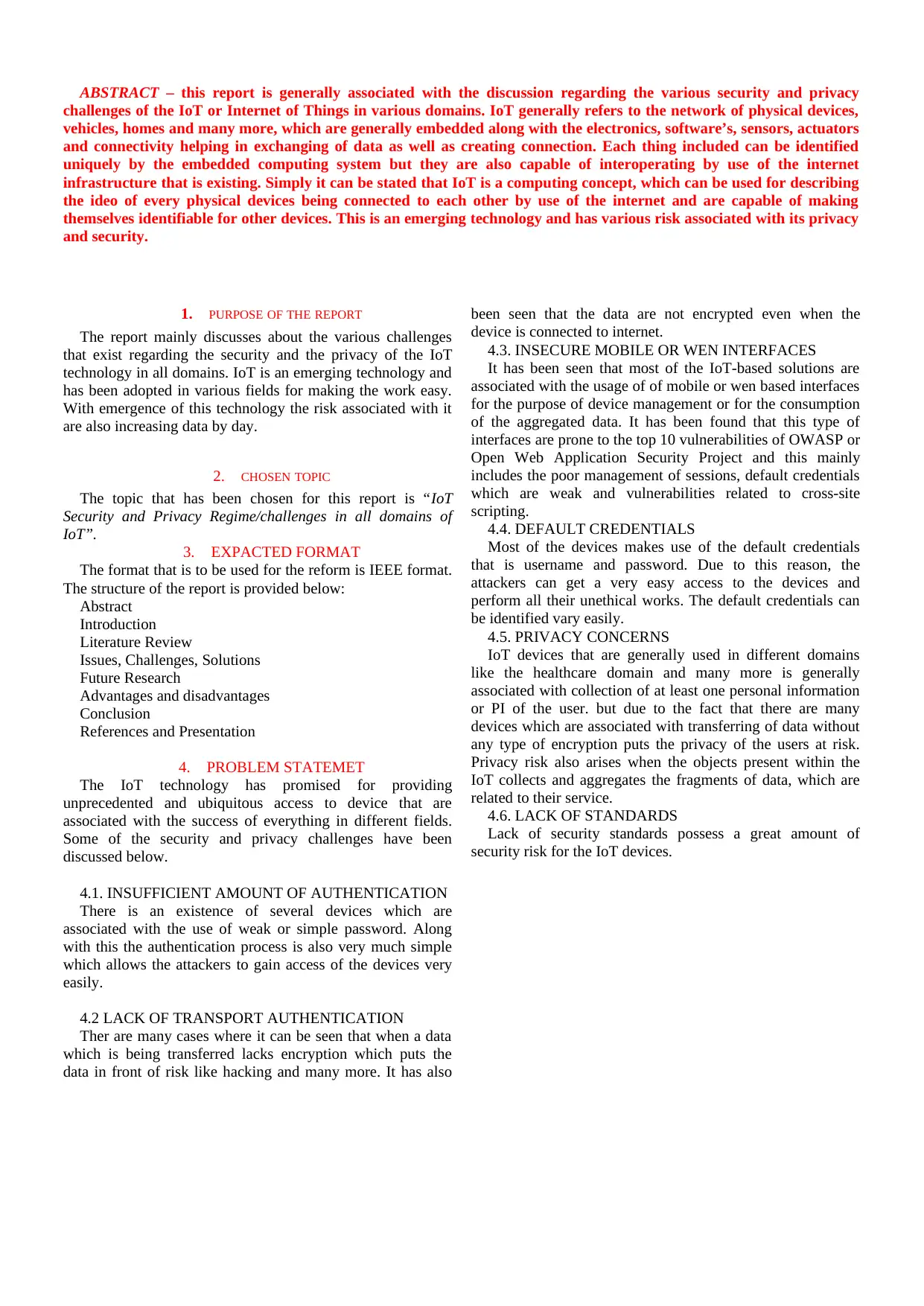IoT Security and Privacy Challenges in IoT Domains - Milestone 1
VerifiedAdded on 2023/06/14
|2
|714
|196
Report
AI Summary
This report delves into the security and privacy challenges associated with the Internet of Things (IoT) across various domains. It highlights that IoT, a network of physical devices embedded with electronics, software, sensors, and connectivity, facilitates data exchange and connection. The report addresses issues such as insufficient authentication, lack of transport authentication, insecure mobile or web interfaces, default credentials, and privacy concerns stemming from the collection and aggregation of personal information. It also emphasizes the security risks posed by the lack of standardized security measures for IoT devices. The assignment brief includes analysing the task, defining the report's purpose and chosen topic, formatting expectations, problem statement development, and abstract writing. Desklib provides access to this report and other solved assignments for students.
1 out of 2








![[object Object]](/_next/static/media/star-bottom.7253800d.svg)